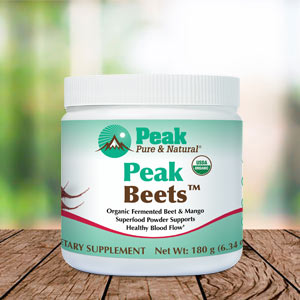Get Easy Health Digest™ in your inbox and don’t miss a thing when you subscribe today. Plus, get the free bonus report, Mother Nature’s Tips, Tricks and Remedies for Cholesterol, Blood Pressure & Blood Sugar as my way of saying welcome to the community!
Reducing the unique high blood pressure threat of rheumatoid arthritis

Rheumatoid arthritis and heart problems just seem to go hand-in-hand.
In fact, rheumatoid arthritis comes with a 50 percent higher risk of fatal heart problems.
That makes it less surprising that people who live with the condition also tend to have high blood pressure.
Luckily, researchers have discovered a simple solution to beating back blood pressure problems for rheumatoid arthritis sufferers…
The cumulative effects of exercise on blood pressure in RA
It would be easy to assume that since exercise offers blood pressure benefits for healthy people, it would do the same for patients with RA. But RA presents compounding factors affecting blood pressure that people without the condition don’t face.
According to researcher, Tatiane Almeida de Luna, “Mental stress and pain may well raise their blood pressure over and above the elevation due to the autoimmune disease.”
Research conducted at the University of São Paulo in Brazil pitted light exercise against high blood pressure in 20 postmenopausal women living with rheumatoid arthritis (RA).
To start, participants underwent two sessions. The first involved pre-intervention measurement of blood pressure and heart rate, at rest and in response to different types of stress.
In the second session, some of the women were asked to walk at moderate speed on a treadmill for 30 minutes, while a control group stood on the treadmill for 30 minutes without exercising.
After exercise or rest, they took tests that simulated stressful situations and tend to raise blood pressure.
After the post-intervention assessments, the participants were fitted with an ambulatory blood pressure monitor for 24-hour real-time measurement. Systolic blood pressure remained stable in all 20 women before and immediately after the treadmill session, but was higher in the measurements made while resting.
The 24-hour monitoring also found the women benefitted from an overall average reduction in systolic pressure of 5 mmHg. This is a significant number since studies show that a 5 mmHg drop in systolic pressure correlates to a:
- 14% lower risk of death from stroke
- 9% lower risk of death from coronary arterial disease
- 7% lower risk of all-cause death for people with hypertension
According to one of the study authors, “This shows that exercise prevented a rise in blood pressure.”
Even better, the researchers believe that the temporary effects experienced from a single exercise session will likely accumulate, leading to long-term blood pressure reduction.
Exercise has benefits for RA beyond the heart
Second author Tiago Peçanha believes there’s even more to be gained by increasing physical activity during stress, saying, “Stressful situations are known to increase the risk of cardiovascular events, such as stroke and heart attack. The study showed that the reduction in systolic blood pressure caused by physical exercise can potentially mitigate cardiovascular problems in rheumatoid arthritis patients.”
If you’re living with rheumatoid arthritis and high blood pressure, exercise could be the key to protecting your heart.
Previous studies indicate that exercise will not worsen rheumatoid arthritis symptoms and can help make day-to-day living with RA easier by reducing the threat of disability.
That’s because exercising on a regular basis boosts both strength and flexibility. Stronger muscles support joints and that alone can reduce some pain. Flexibility can aid joint function.
If RA has severely damaged the hips or knees consider low-impact exercises like walking, swimming or bicycling. Otherwise, do what feels good. Consider strength training to reduce the muscle loss that occurs with age, but is accelerated with RA.
Don’t forget about these important vitamins either:
Maintain healthy folate levels. This is vital to overcome the homocysteine imbalance that contributes to a higher risk of heart problems with RA.
Get plenty of vitamin D. Studies have found that not only is low vitamin D linked to RA, as it is to many autoimmune conditions, but vitamin D deficiency is highly prevalent in RA patients and is related to chronic pain and lower mental and physical quality of life scores.
Another study revealed that a higher intake of vitamin D and omega-3 fatty acids may be associated with better treatment results in patients with early rheumatoid arthritis.
Omega-3s can help even more. In a study of older women, taking a 3-gram omega-3 supplement daily more than doubled the amount of muscle strength gained from exercise. Omega-3s also have blood pressure-lowering and anti-inflammatory benefits.
Editor’s note: Did you know that when you take your body from acid to alkaline you can boost your energy, lose weight, soothe digestion, avoid illness and achieve wellness? Click here to discover The Alkaline Secret to Ultimate Vitality and revive your life today!
Sources:
A single session of aerobic exercise improves blood pressure in rheumatoid arthritis patients – EurekAlert!
Can Vitamin D Help Relieve Your Rheumatoid Arthritis? –KeckMedicine.Org














